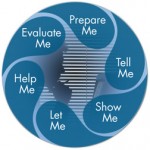May 28th, 2009 by Frank LaBanca, Ed.D.

from: www.rwd.com
I’ve been working on several projects lately considering autonomy of learning whether it be for students or adults. Specifically, I am (a) working with the High Ability Inquiry Research group at McGill University trying to define the term inquiry literacy, (b) working with some of my Ed.D. colleagues from Western Connecticut State Univ on several independent publications from our dissertations, (c) preparing professional development programming for Oxford, (d) developing a Moodle site for a blended learning course I teach and (d) working with my applied research students on their continued work. These activities have me continually thinking about being a self-directed, self-effective, life-long learner.
I was recenlty invited to view a fantastic wiki, written by my colleage, Donna Baratta, Library Media Specialist from Mildred E. Strang Middle School in Yorktown, NY. Although I believe her wiki is currently private, it includes a wonderful explanation of models for professional development:
Five Models of Staff Development by Sparks and Loucks-Horsley may be used to differentiate instruction in order to meet the needs of teachers based on years of experience, level of technology use and/or mastery, and professional goals in conjunction with district initiatives, NYSED Standards and more. (This information also appears under the heading of Models and Activities on the Models page.) Differentiation in regard to technology PD is particularly significant, as learners may vary from reluctant users to confident users of technology. PD must be designed to meet the needs of all learners participating in the PD experience.
Five Models of Staff Development by Sparks and Loucks-Horsley
1. Individually Guided Staff Development
A process though which teachers plan and implement their own activities to promote their own learning
2. Observation/Assessment
This model provides objective data and feedback regarding classroom performance to produce growth or identify areas for growth
3. Involvement in a Development/Improvement Process
Teachers engage in curriculum development, program design or a school improvement process
4. Training
Individual or group instruction that involves teachers in the acquisition of knowledge
5. Inquiry
Teachers identify an area of instructional interest, collect data, and make changes in their instruction based on an interpretation of those data
(Sparks & Loucks-Horsley, 1989, p. 41)
Further Reading:
Differentiation: Lessons from Master Teachers
Recommended Reading: (Not available from ERIC in time for this posting)
Differentiation within Team-based Teacher Learning. Sparks, Dennis. Journal of Staff Development, Fall2005, Vol. 26 Issue 4, p4-4, 2/3p; (AN 20217427)
Differentiated Instructional Strategies in Practice: Training, Implementation, and Supervision. Gregory, Gayle H.. 2003 132 pp. (ED476461)
I really like the progression presented, allowing for a continuum of growth as expertise level increases. We certainly should be aiming for teachers to be engaged in independent action research as part of professional growth, evaluation, and supervision. I am convinced that this change process of teacher as researcher andpractitioneris the one of the necessary steps to allow for systemic increases in student achievement. Best practices will continue to develop out of an evidence-based profession, not one based on anecdotal, feel-good, been-doin’-it-fer-years strategy.
I think this might have applications beyond the professional growth model, as we think about how to develop 21st-century skills in all learners, both educators and our students.